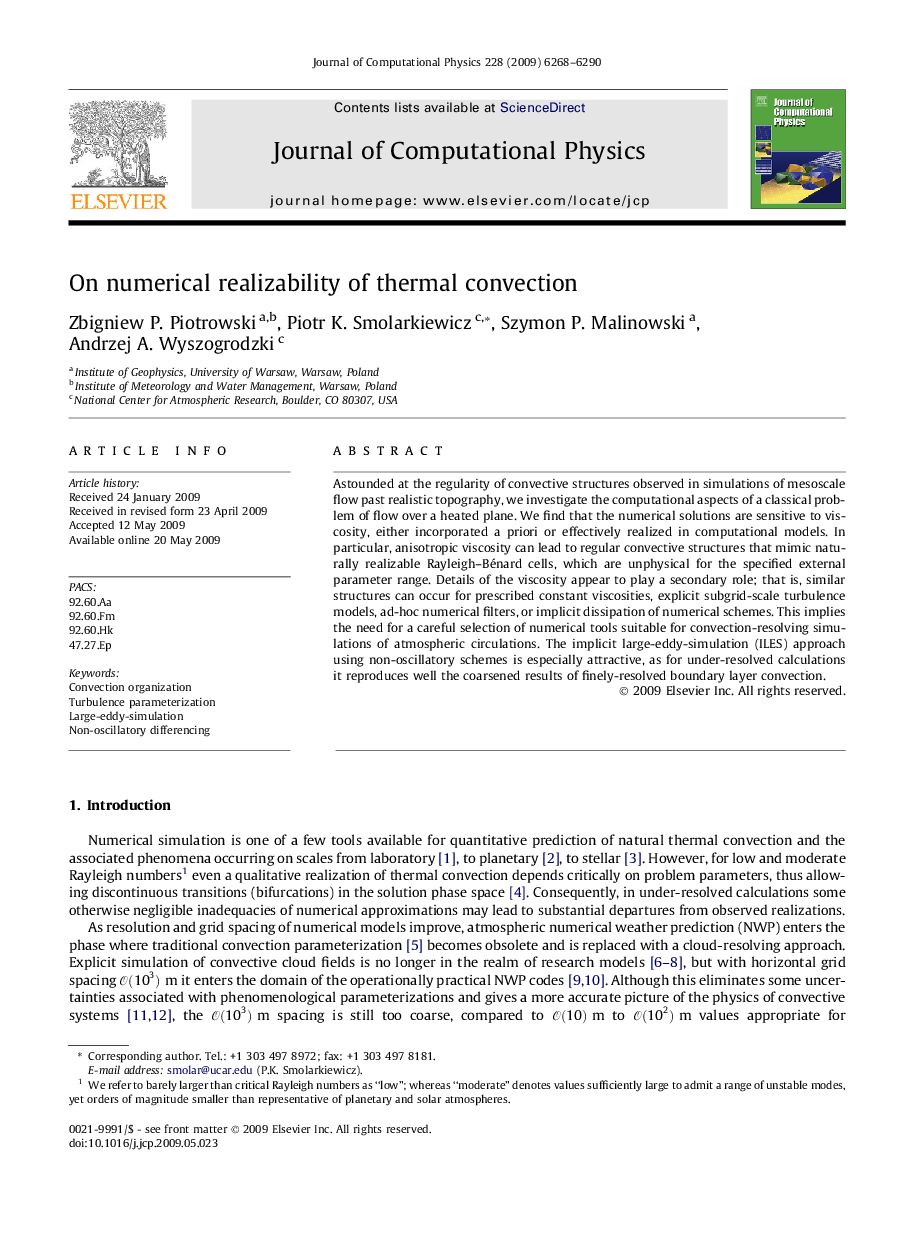| Article ID | Journal | Published Year | Pages | File Type |
|---|---|---|---|---|
| 520734 | Journal of Computational Physics | 2009 | 23 Pages |
Astounded at the regularity of convective structures observed in simulations of mesoscale flow past realistic topography, we investigate the computational aspects of a classical problem of flow over a heated plane. We find that the numerical solutions are sensitive to viscosity, either incorporated a priori or effectively realized in computational models. In particular, anisotropic viscosity can lead to regular convective structures that mimic naturally realizable Rayleigh–Bénard cells, which are unphysical for the specified external parameter range. Details of the viscosity appear to play a secondary role; that is, similar structures can occur for prescribed constant viscosities, explicit subgrid-scale turbulence models, ad-hoc numerical filters, or implicit dissipation of numerical schemes. This implies the need for a careful selection of numerical tools suitable for convection-resolving simulations of atmospheric circulations. The implicit large-eddy-simulation (ILES) approach using non-oscillatory schemes is especially attractive, as for under-resolved calculations it reproduces well the coarsened results of finely-resolved boundary layer convection.
